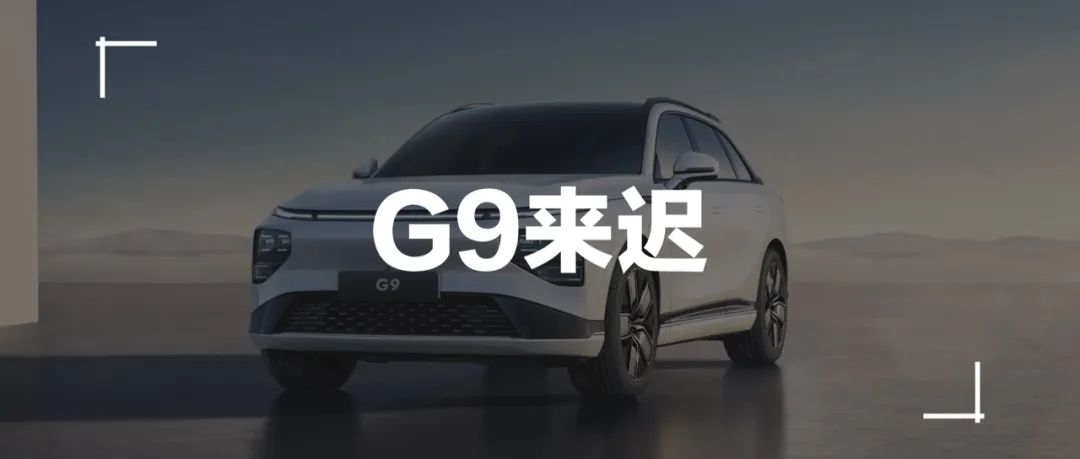Author: Da Baozi Li
Recently, there have been many new exposures about the XPeng G9, and it is going to debut as the last product of XPeng’s new lineup this year.
As XPeng’s flagship mid-to-large-sized SUV aimed at the high-end market, can the G9 bear the mission of XPeng brand upwards?
Let’s talk about it.
Intelligent flagship, breaking the intelligence ceiling?
In a recent interview, He XPeng’s evaluation of the G9 was succinctly:
-
I think G9 will have more advantages than ES7 and L9…
-
After seeing their products, we actually have more confidence
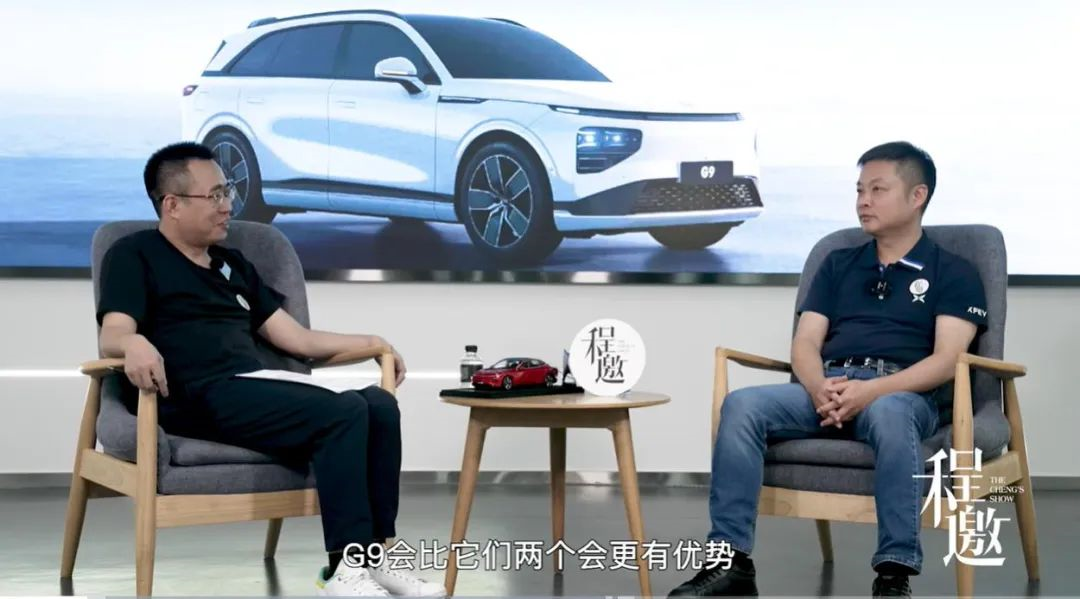
Why does He XPeng have such confidence in G9’s advantage?
Some time ago, XPeng released an official trailer for the G9, which basically encompasses all the highlights of the new car.
In the three-minute short film, the highlights of the XPeng G9 were hinted in a slightly “connotative” style through a conversation of two people in a rainy night coffee shop. The main highlights are as follows:
5D Intelligent Cabin
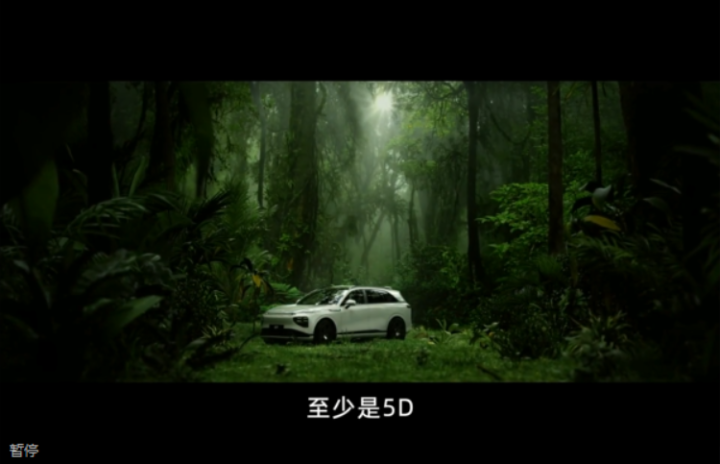
In the video, it directly mentions “odor, temperature, vibration, and even a gust of wind,” which can be understood as the G9 may have “intelligent temperature control,” corresponding to the temperature mentioned in the trailer. It is different from automatic air conditioning, but the temperature will be automatically adjusted according to the scene, such as controlling the temperature when sensing a sleeping scenario, and lowering the temperature when sensing that the driver is hot).
The “fragrance system” can also achieve intelligent control for the odor mentioned in the trailer and the “intelligent seat massage,” providing a percussive effect and vibration similar to that of a 4D cinema when watching a movie.
With these functions above, it can be speculated that the G9 will have the “entertainment cabin” and the “third space” such as “life and sleep cabin” as optional features.
In addition, there are rumors that the G9 offers a super-strong music cabin mode, which is said to be quite innovative.
Intelligent Dual-Chamber Air Suspension
In the film, the air suspension part mainly mentions two aspects:
The first part is about hardware, and the specific vocabulary is “soft and hard appropriate.” This word also explains the adjustment of the XPeng G9 air suspension, which will use more compatible methods to make me feel more inclined to comfort, then integrate some sports characteristics. Because there is a sentence in the video that says “it’s not a problem to have some excitement,” plus the obvious sound of suspension adjustment and motor acceleration, this should be a notation for sports-type.Translate the following Markdown Chinese text into English Markdown text, in a professional manner, preserving the HTML tags inside Markdown and outputting only the results.
In addition, XPeng He himself has stated that the G9’s air suspension system is equipped with a dual-chamber air suspension system that is different from the traditional system.
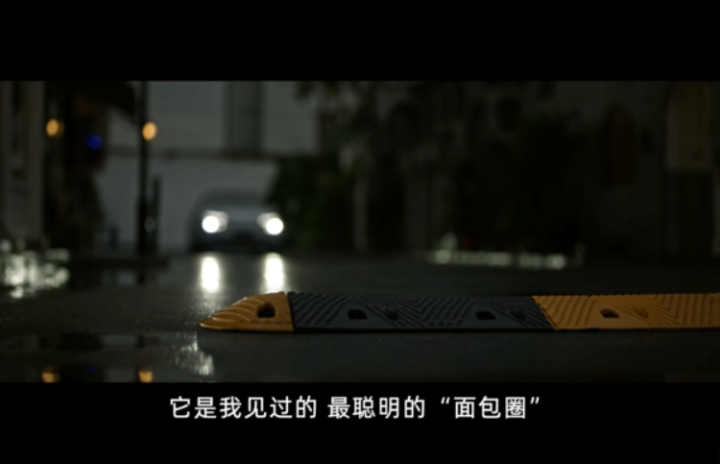
The second part is about intelligent content, and the video repeatedly emphasizes the “smartest donut” and “remember these bumps,” while showing electronic scanning images on the screen.
It is likely that the G9’s air suspension system will be able to memorize some of the frequently encountered road conditions, such as speed bumps, in advance in order to provide a more comfortable ride.
This feature has already been designed in the memory parking of P5 and P7. For example, when you learn memory parking, when you pass a speed bump, the vehicle will remind you “the road is a bit bumpy, and Little P has remembered it,” and record the information and signs of the speed bump in the vehicle’s SR, it is just unknown whether this is achieved through visual or lidar scanning.
3D UI and SR Simulation System
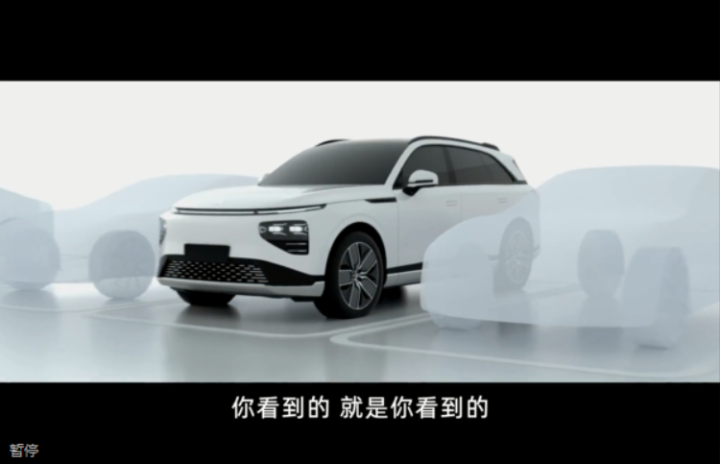
In this video:
-
Through a direct 3D UI screen with text commentary, it is stated that “the virtual effects all have a backend,” meaning that the virtual world is based on real-world scenarios.
-
“What you see is what you see,” which means that the icons you see on the screen are the same as what you see in reality.
During navigation and assisted driving, the entire interface looks very realistic thanks to real-time rendering of the vehicle’s surroundings, which greatly increases the driver’s confidence in using assisted driving. Therefore, the video also ends with the sentence “are you confident enough?”
This not only implies the strong capability of the assisted driving system, but also demonstrates the advanced rendering technology, especially the integration of 3D technology, making the display more realistic.
In the screenshot above, it can be clearly seen that the entire parking lot is scanned and recorded, and the displayed range is more complete and detailed than traditional automatic parking systems. The 3D display also allows users to more clearly understand their position and the vehicle’s next move, enhancing confidence and adding a sense of sophistication and technology to the vehicle.
This is similar to the concept of the automatic driving 3D panoramic map made by Jidu auto. If this is the same function, XPeng has released it before Jidu.
Full-Scene Intelligent Assistance Driving
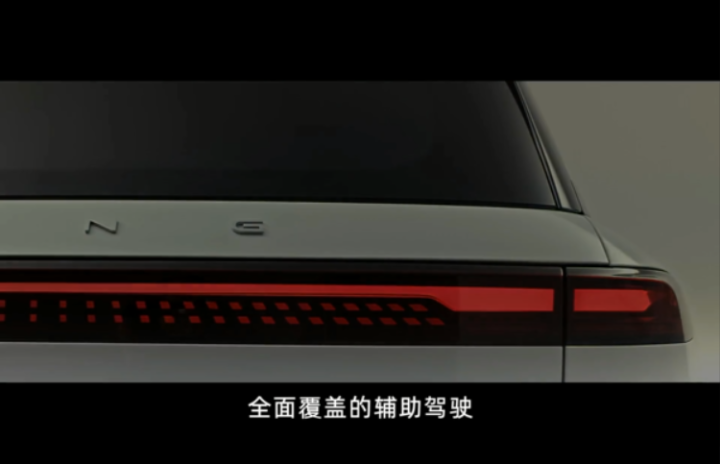 The promotion of G9’s full-scenario assisted driving can achieve point-to-point assisted driving. In other words, it covers the entire journey from the garage at home to the garage at work and automatically transitions in between.
The promotion of G9’s full-scenario assisted driving can achieve point-to-point assisted driving. In other words, it covers the entire journey from the garage at home to the garage at work and automatically transitions in between.
For example, “automatic parking out of the parking lot” – “urban NGP” – “highway NGP” – “urban NGP” – “automatic parking in the parking lot” form a complete closed loop.
The biggest advantage here is that the driving work is mostly handled by the system, and the driver’s role is more of a monitoring and bottom-line protection job. At this time, the driver is more like a safety officer.
The video also emphasizes the core advantage of G9’s assisted driving, which is “fusion”. In terms of laser radar and visual route, XPeng actually uses a fusion road, which is mainly based on vision and supplemented with laser radar.
From the above information, G9 can almost be said to have maximized all kinds of experiences on the basis of a five-seater SUV, especially in intelligence. Based on XPeng’s city navigation assisted driving CNGP, it is expected to be launched in a certain super-first-tier city very soon. By then, G9 will have the ability to achieve the first point-to-point full-scenario assisted driving capability in China, and XPeng expects to release this technology in 2023.
The launch of this capability will mark XPeng’s successful closure of the assisted driving experience, and the advanced assisted driving has fully achieved full-scenario coverage of users’ real daily life. This ability undoubtedly sits at the pinnacle of product strength, so in terms of product strength, G9 is almost full of fighting power and is no less than any mid-to-large SUV of the same period.
Understanding XPeng should start with technology
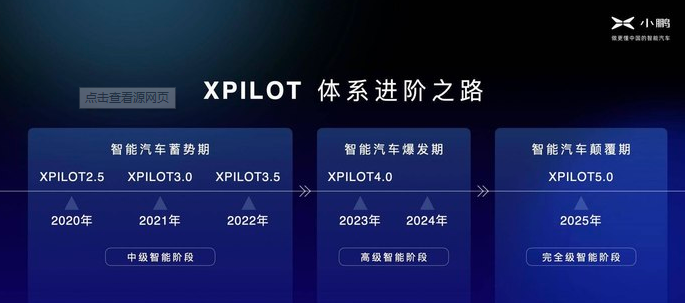
“XPeng is a technology company that manufactures products driven by autonomous driving technology.”
If you can understand this sentence, you will have a better understanding of XPeng’s products, roadmap, and various decisions.
The biggest difference between a technology company and an automotive company is that “technology companies care most about the progress of technology, while automotive companies care most about the progress of products.”
It’s not easy to understand, so let’s take an example:
For example, leading-edge technology such as urban NGP will definitely be launched on the most expensive flagship product of an automotive company, because automotive companies care that their flagship product must have progress, and that the pricing basis of this product will be more confident.
However, XPeng launched City NGP on the P5, which costs around 200,000 RMB, because technology companies like XPeng care more about the constant progress of technology at this point in time, rather than selling the most expensive product.
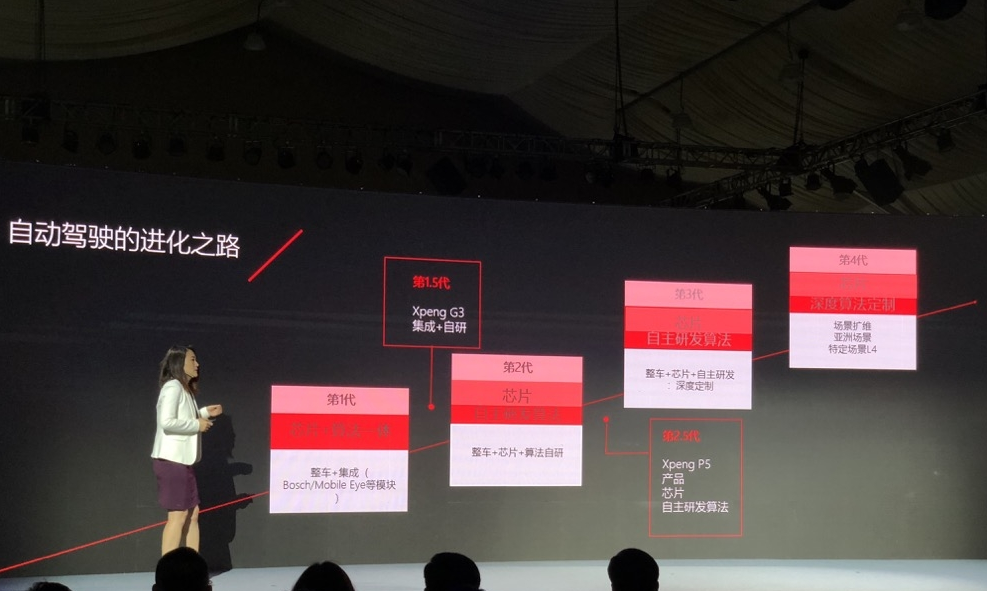 In fact, back in 2018 at the release conference, XPeng was very clear about the iteration of its product system. Unlike other companies, the iteration of XPeng’s product system is marked not by models, but by intelligent assisted driving technology. From XPILOT 2.5, XP 3.0, XP 3.5, XP 4.0, to XP next…, all have clear plans.
In fact, back in 2018 at the release conference, XPeng was very clear about the iteration of its product system. Unlike other companies, the iteration of XPeng’s product system is marked not by models, but by intelligent assisted driving technology. From XPILOT 2.5, XP 3.0, XP 3.5, XP 4.0, to XP next…, all have clear plans.
As a carrier of technology, there are models that carry each technology. Thus, technology comes first, while products come second.
Therefore, understanding XPeng requires starting from this idea. XPeng starts with automated parking, then enters NGP at high speed, then to urban NGP, then to full-scene assisted driving, then to autonomous driving, and even later to flying cars. These are all technological advances, and the ones that bear these technologies are G3, P7, P5, and G9. It can be said that as long as the technology can be realized, the product side can make greater collaboration to achieve the technology.
From this, we can understand questions such as:
- Why is P7 more expensive than P5 if it cannot use urban NGP?
- Why are XPeng’s best cars always the next one?
For XPeng, it is more important to be prepared before the dawn of intelligent cars. Therefore, they must go all out and accelerate to the future.
So, to understand XPeng, it should be viewed from the perspective of a science and technology company, which would make it easier to understand XPeng.
However, at the same time, this also brings about some problems, because the capabilities of each XPeng vehicle in terms of intelligence are very fragmented, and this fragmentation cannot be explained simply by “switching between new and old platforms.”
Precisely because XPeng is the least clear about new and old platform switching among new car brands, whether it is the NIO 866 or the Ideal ONE, users clearly know that these are old platform products, but XPeng squeezes P5 out of P7’s architecture, and P5’s architecture does not require the implementation of urban NGP.
As a result, users will think that XPeng’s assisted driving is very useful, but each of XPeng’s products is independent.
The Balance Challenge of the Brand Upward and the Fast Run
In the wild run of technology, how XPeng obtains a balance between technological progress and user experience is a huge challenge for the brand upward.
Undoubtedly, the product strength of G9 itself should not be a problem for XPeng’s brand upgrading, and problems may come from other aspects outside product strength.
Experience Challenge under Irreusable TechnologyUntil now, every technological iteration of XPeng Motors remains non-transferable. For example, the NGP of P7 cannot be released to earlier models such as G3, and the CNGP of P5 cannot be released to P7. Additionally, the full-scene assisted driving of G9 cannot be released to P5.
In terms of user experience, the software update life of XPeng Motors is approximately two years. Once the next generation of XPeng products is delivered, the software update will become slower and eventually stop.
To experience higher-level autonomous driving capabilities, it is highly likely that the only option is to “change cars”.
Currently, XPeng Motors uses four different assisted driving structures, including the self-researched G3, self-researched and supplier-combined P7, self-researched P5, and the newly introduced G9 with an unprecedented electronic architecture. In this situation, there are significant differences between the four assisted driving hardware, making it challenging to interconnect and reuse technology, especially for backward compatibility of higher-level technology.
Each of XPeng Motor’s models has its own assisted driving system. The elements that can be reused between systems are relatively limited. Therefore, the pressure on XPeng’s automatic assisted driving team is immense to maintain and develop the XP 2.5, XP 3.0, and XP 3.5 systems.
Additionally, it is challenging for XPeng to prioritize older version systems based on user numbers. For example, P7 has the most users, but its system is not unified with that of P5. Therefore, the most resources must be allocated to the most important technology during each time period.
In 2019, G3 was the top priority. In 2020, P7 was the most pressing issue. Therefore, In 2021, landing the NGP in cities is undoubtedly the focus. However, during these time periods, upgrading the non-focus vehicle models has become a “forgotten corner”.
The first batch of G3 models had no significant updates for six months after receiving monthly OTA updates in 2019. The few updates provided were focussed on compliance, without any significant new features or optimization.
P7 is also showing similar signs of stagnation, despite Wu Xinzhou saying last year, “The good show has just begun.” After the mass update of memory parking was introduced, the assisted driving of P7 appears to have halted. The planned ability to release NGP to XP 2.5 does not seem to have a voice anymore. Additionally, the previously demonstrated function of reminding drivers regarding red lights and green lights is still silent.
Thus, XPeng currently appears to be focusing more on the current NGP in urban areas, with most of the resources for other vehicle models and products expressing their existence.
Brand promotion increases demand for upgraded technology.The problems, before the launch of G9, may not have been too big since the average selling price of XPeng was still below 300,000 CNY, and in China, 300,000 CNY is the watershed that distinguishes luxury/non-luxury users. As an ordinary user, buying a car may be more about getting value for money.
Take XPeng’s past competitive performance as an example:
- The 150,000 CNY G3 provides the most user-friendly automatic parking and even lane-changing light functionality;
- The 270,000 CNY P7 offers ultra-long endurance + the best high-speed navigation-assisted driving on the market + the most user-friendly intelligent cabin;
- The 200,000 CNY P5 becomes the only low-threshold model in the world to use urban navigation-assisted driving.
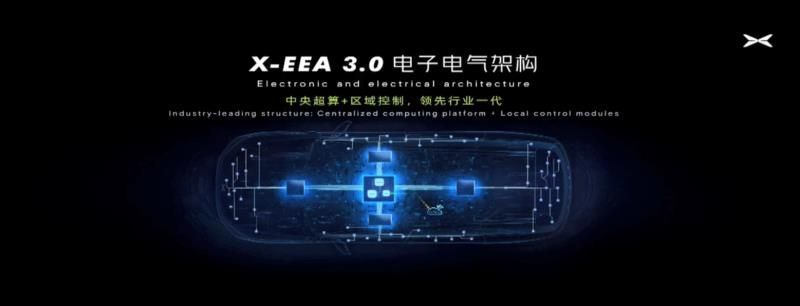
Although the official pricing has not yet been announced, it is clear that the price of G9 should fall within the 300,000-400,000 CNY range. In the face of luxury car consumers, user experience needs are different. In the past, users may have regarded the product more as a “tool,” focusing on whether the task of transporting the user from one location to another was completed.
Now, upgraded users use the product more as an “experience,” pursuing whether various needs can be met during use. In addition to product strength, satisfaction with these needs depends on service and system capabilities.
So here’s the problem: when these users find that their purchased car cannot have any more substantial updates after two years, they will compare it with other products, such as NIO ES7, which promises a 15-year software update cycle for the vehicle system. In practice, the 886 model that was launched earlier than XPeng’s first-generation product G3 is still being updated, and even a hardware upgrade solution for an intelligent cabin has been introduced.
At this time, for users who emphasize experience, this product stagnation will bring serious experience decline, and even disputes about unfulfilled commitments may arise.
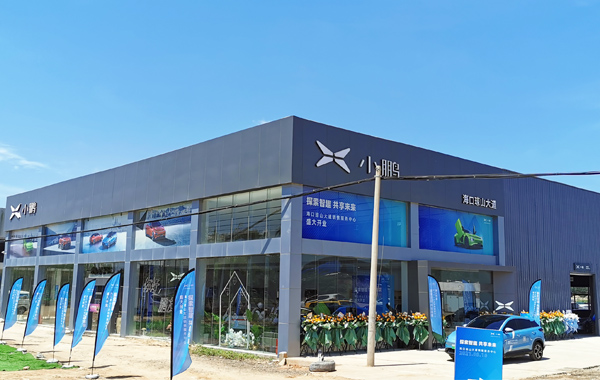
This ability upgrade is not only limited to software; the entire brand’s service capability is also a crucial core element. XPeng’s current service system bears multidimensional service needs ranging from 150,000 CNY to 400,000 CNY. This determines that user groups cannot be distinguished, and only a unified after-sales service capability can be provided. However, 150,000 CNY and 400,000 CNY users may have significant differences in needs. If there is an obvious distinction, it will inevitably cause experience backlash from existing users. But if there is no distinction, how to meet the needs of new users and achieve brand upgrading?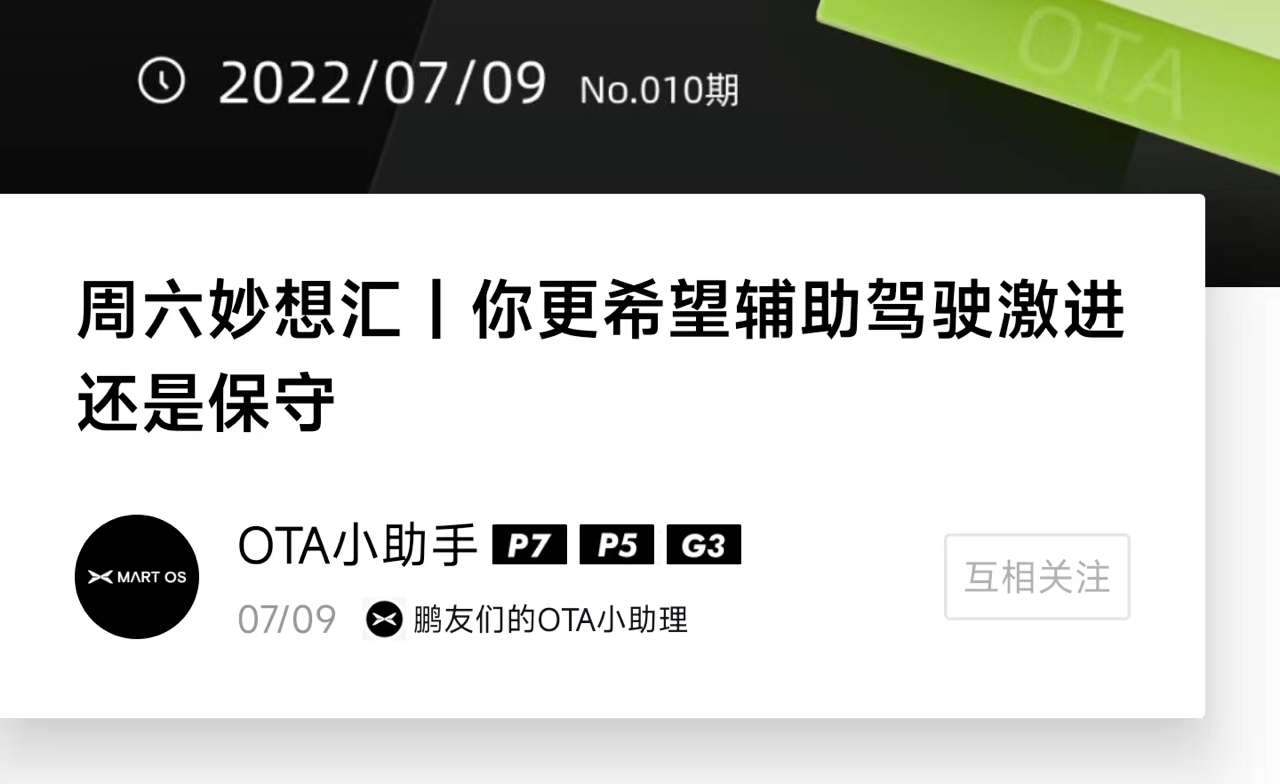
Translate the Chinese Markdown text below into English Markdown text in a professional manner, retaining HTML tags inside Markdown and outputting only the corrected and improved parts.
For example, XPeng Community has changed its operations model five or six times in the past three or four years, from having nothing to red V car owner points to Pengyou value to a hall of fame, and then returning to points and starting a medal system.
The rapid iteration of user operations has made the community almost more of a check-in, point-getting, and rainbow-farting territory, which is inevitably difficult to attract truly content residents. For example, the content communication about OTA upgrades shown in the above picture has been called for for two or three years, and finally began to be produced, resulting in ten issues of content that forever remain stuck on July 9th. Even if you decide to interrupt something, just make an explanation, but there isn’t, it’s just so inexplicably gone, and there are countless examples like this.
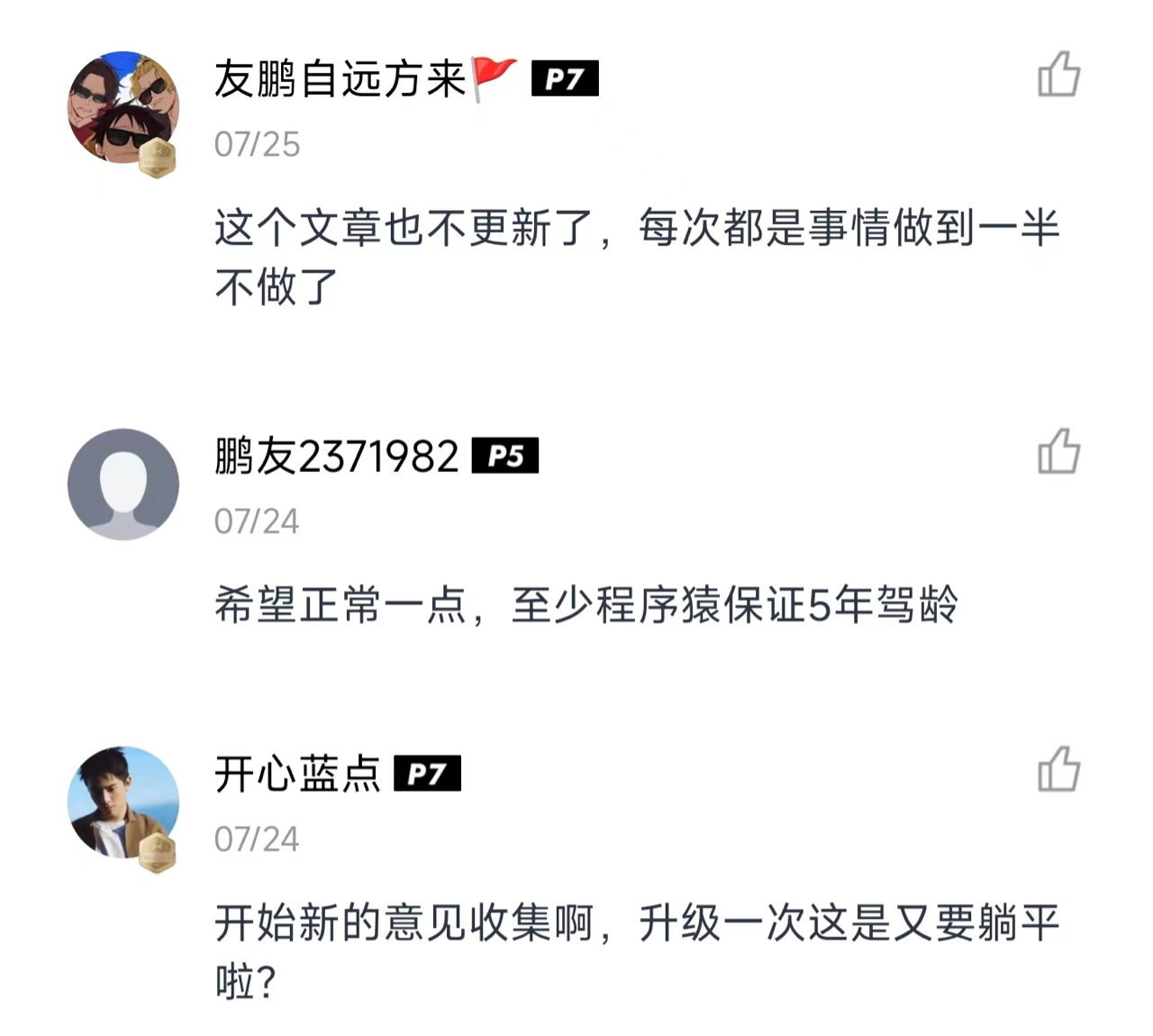
Technology ≠ Experience
Perhaps there are still many buddies who cannot accept this point of view, as they might think that as long as the product is powerful, they do not care about the service.
In fact, in the current situation, especially in the context of brand upgrading, the upgrading of service capability of the system has become more and more important, because only experience is what users can touch, and technology should be a means to support experience.
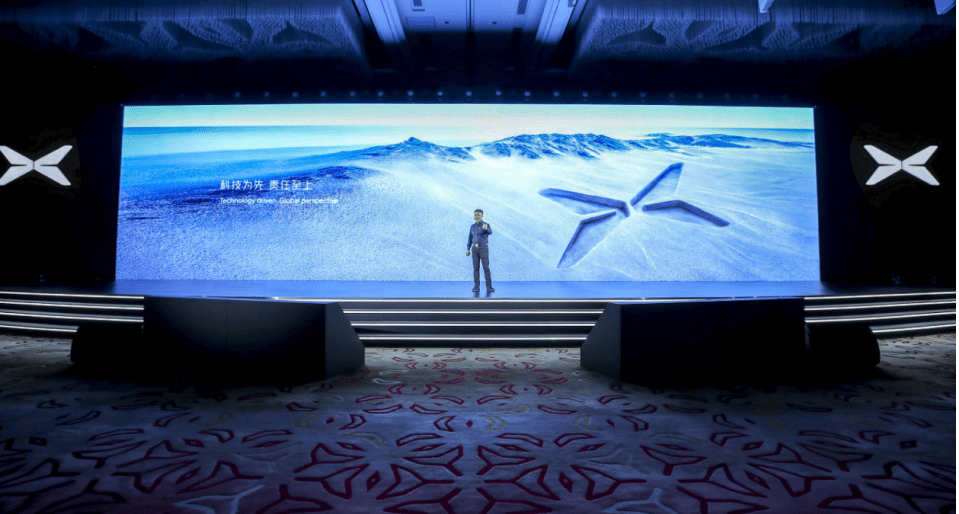
For example, even with the technical support of 480 KW supercharging, you may discover chaos in management once you arrive at the charging station. Either oil vehicles are occupying the charging stations and cannot charge, or other 400V low-power car owners are occupying the 800V charging poles. Your experience can be imagined.
On the other hand, even if the supercharging power is only 110 KW, if the charging pile management is standardized, and you are able to charge once you arrive and the environment is neat and generous, and even able to call a one-button energy replenishment without a sense of sensation, I believe that most of us would choose the second service experience because that is the experience that we can really get.
From the perspective of the vast majority of users, the purpose of consumption is a better experience, not a validation of technology.
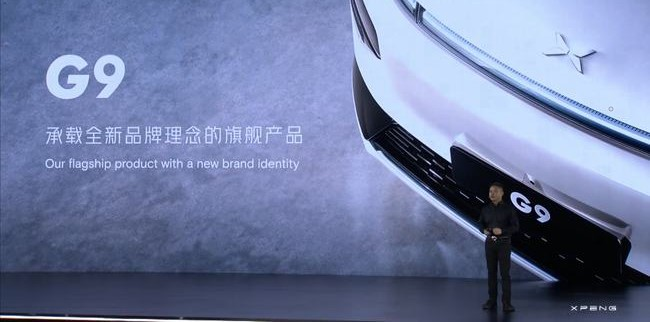
As the high-end debut of XPeng, can the G9 shoulder the three major ascending tasks of brand, sales, and profit margin?
Perhaps only time can give the answer.
This article is a translation by ChatGPT of a Chinese report from 42HOW. If you have any questions about it, please email bd@42how.com.
